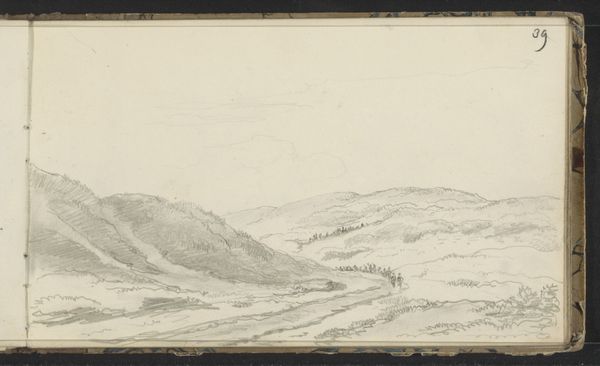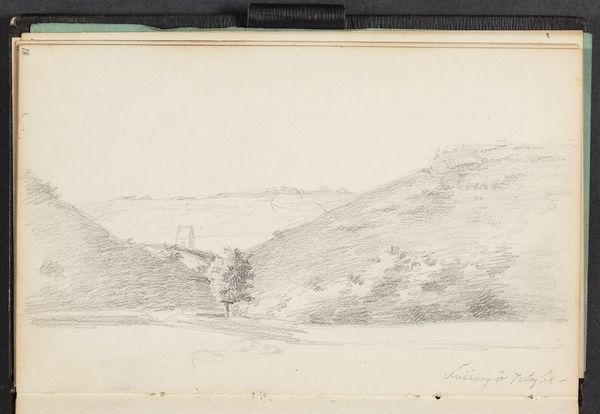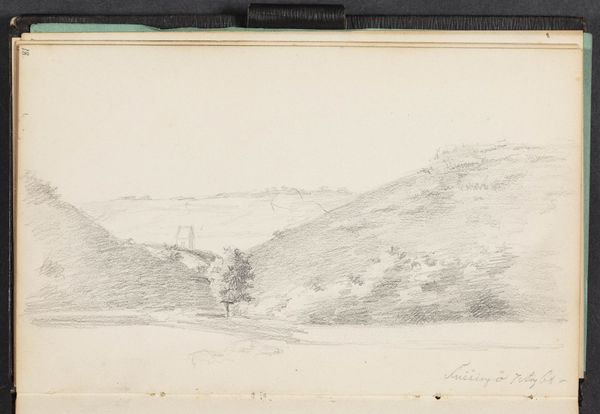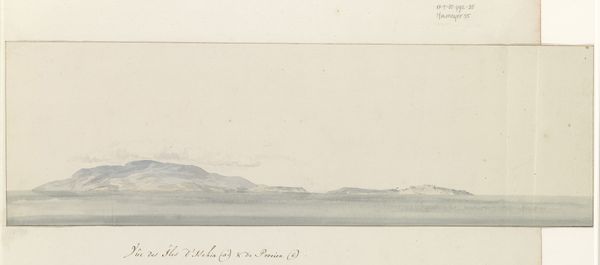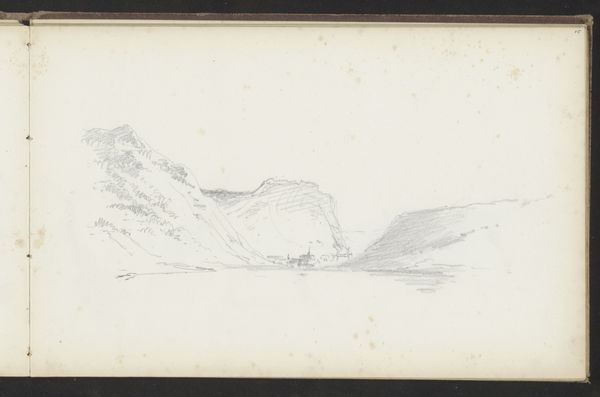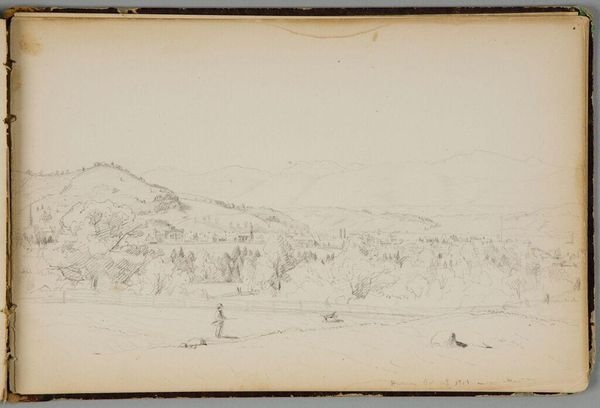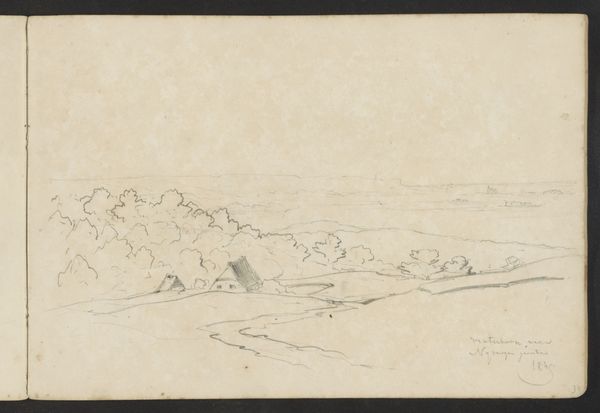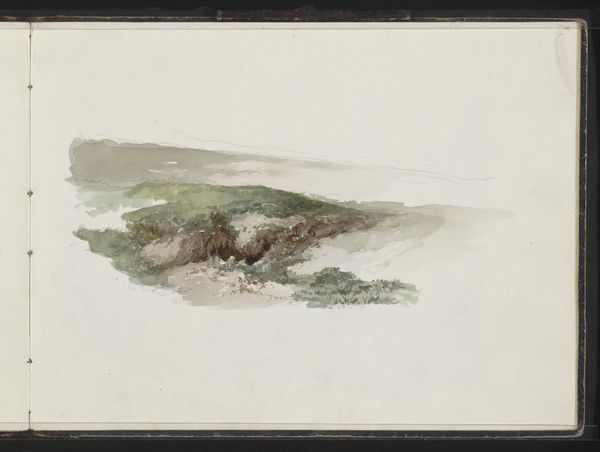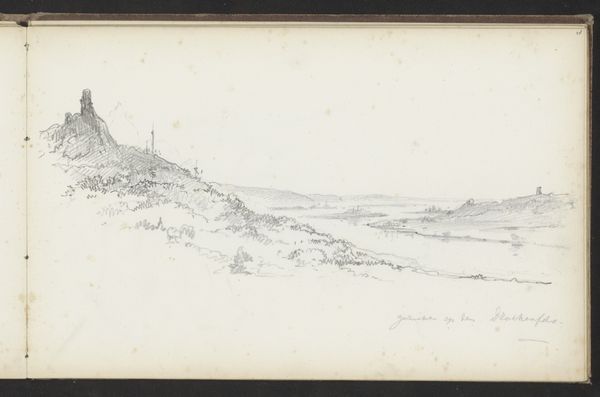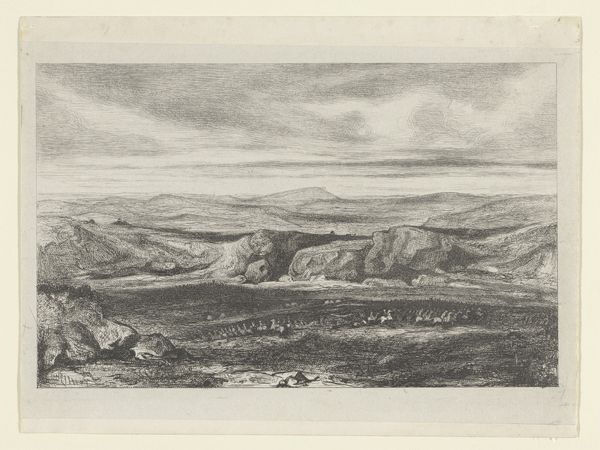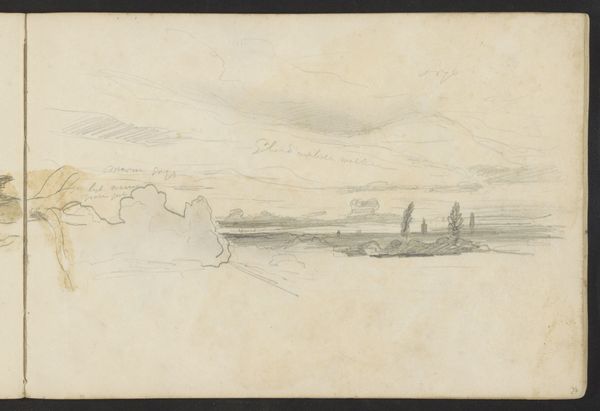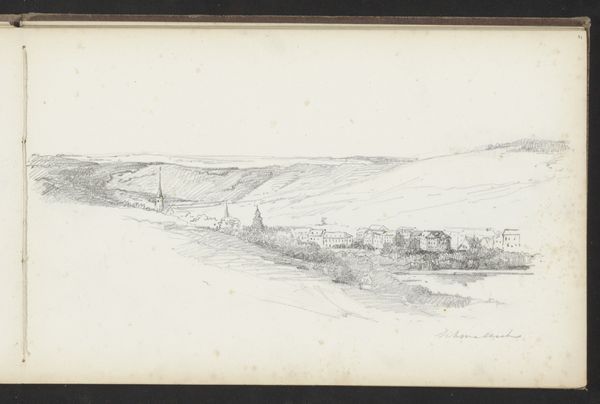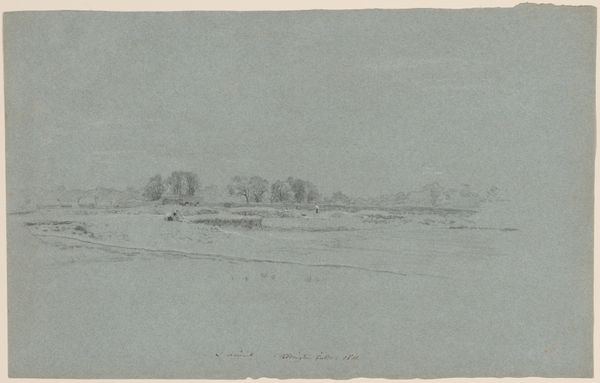
drawing, paper, pencil, graphite
#
drawing
#
impressionism
#
landscape
#
paper
#
coloured pencil
#
pencil
#
graphite
#
sketchbook drawing
Copyright: Rijks Museum: Open Domain
Curator: Immediately, this drawing breathes calm. There’s something so utterly still about it. Editor: And that still quality perfectly captures "Landschap met bomen", or "Landscape with Trees," a work created using graphite, colored pencil and pencil on paper around 1871 to 1878 by Maria Vos, residing here in the Rijksmuseum collection. What do you think gives it this… serenity? Curator: I think it's the soft, blurred edges. See how the trees aren't sharply defined, they sort of melt into the sky? It reminds me of looking at a memory – fuzzy around the edges but emotionally resonant. It feels intimate, like a page ripped straight from Vos’ sketchbook. I wonder what she was feeling that day. Editor: Sketchbooks offer such insight into the artist’s practice and preliminary processes, which provides context of this time. The rise of Impressionism, its influence on landscape art - this piece reflects an approach where capturing a feeling, an impression, was of paramount importance, over rigid academic depictions. It challenges existing notions, breaking away to invite viewers into a more subjective reality. Curator: Right! Like she’s saying, "Don't just see the trees, *feel* the stillness of this place with me." It really does bypass the analytical part of my brain and heads straight for the heart. Plus, I love the simplicity. Restricting yourself to graphite forces you to become innovative with value and shading to evoke complexity, right? It looks so minimal, yet evokes so much… a feeling of melancholy perhaps. Editor: True. Vos captures not just a place, but the *experience* of being in that place, and in that period. Consider too, who got to decide what and who were worthy subjects. How societal structures might’ve sidelined her as an artist in broader historical narratives, which also helps us appreciate such sensitive works within a critical framework. This period opened avenues to many artists on the fringes who capture, to this day, feelings we all know in a subjective light. Curator: I suppose that the lack of information only adds to the wonder, allowing imagination to fill in these missing places that might once have been occupied by other people… maybe this will inspire other creatives, and also allow art history to grow past those notions of restriction. Editor: Absolutely. Works like this also remind us to re-evaluate which stories get told, who does the telling, and how even the simplest of drawings carries significant socio-cultural weight.
Comments
No comments
Be the first to comment and join the conversation on the ultimate creative platform.
